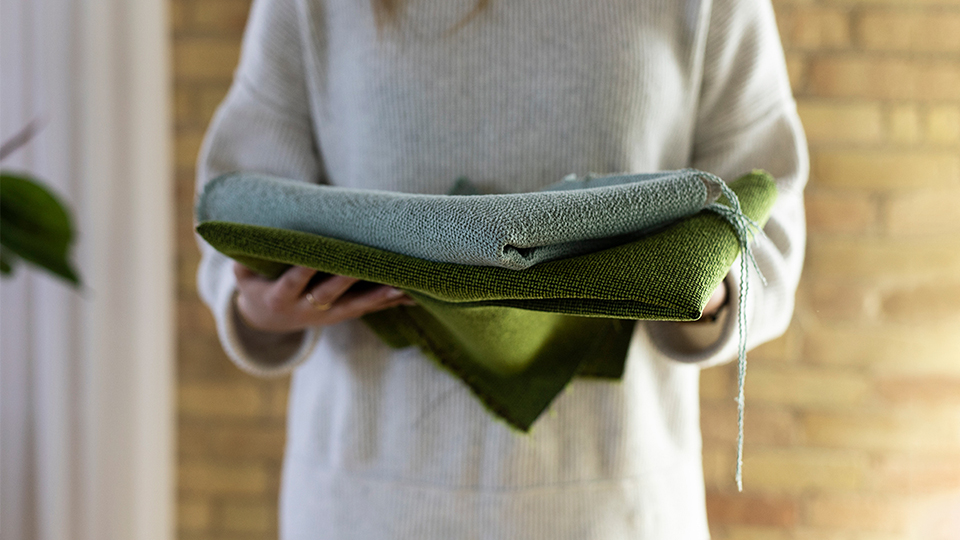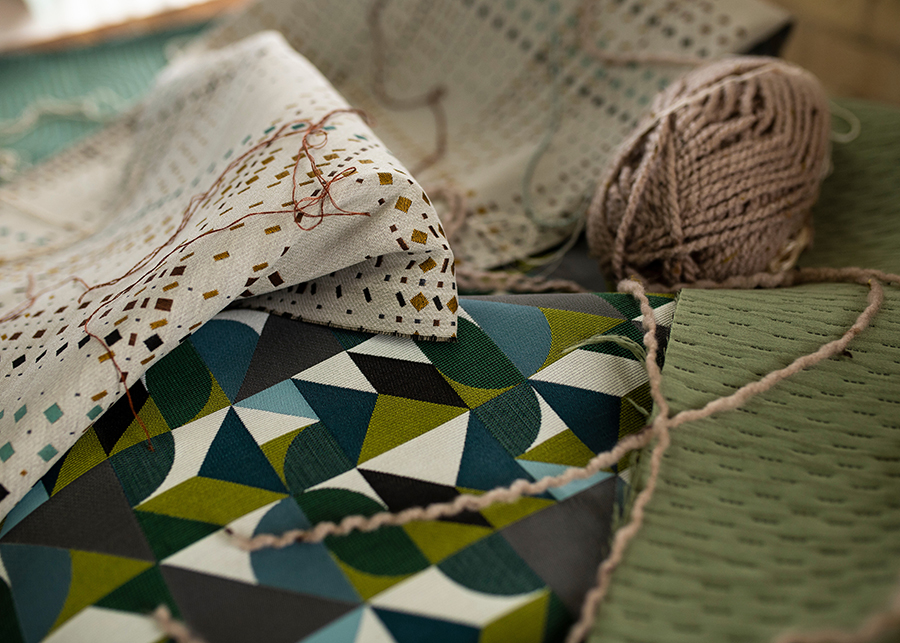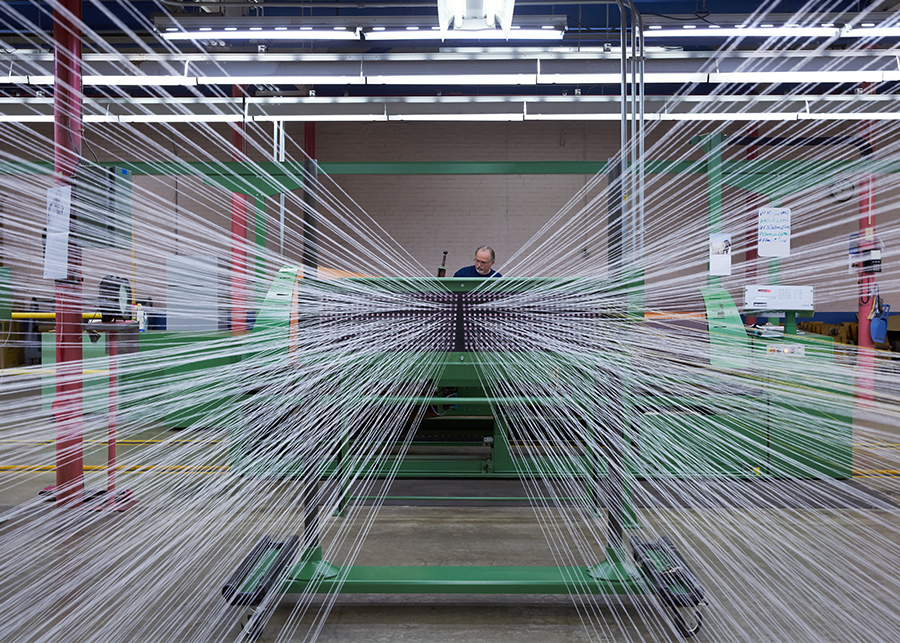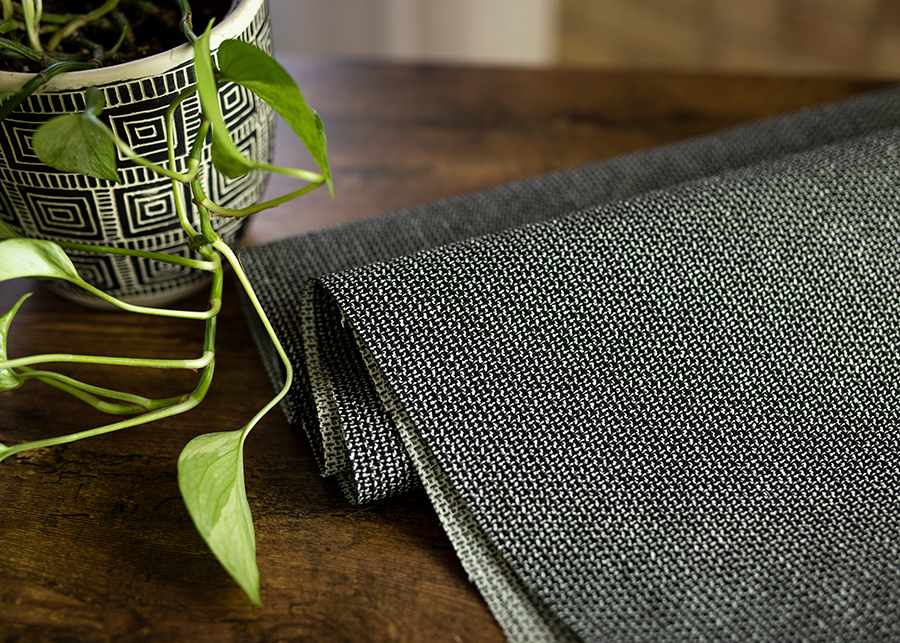Responsible Elegance: Sustainable Textile Design Trends for a Greener Tomorrow
Blog • April 13, 2023

As the human conscience continues to awaken to the pressing needs of the environment, the textile industry is seeing a significant shift toward more eco-conscious and responsible manufacturing practices.
As a result, the demand for sustainable materials and environmentally friendly design has generated an exciting emergence of novel and innovative textile trends.
In the following insights, we explore several leading developments in textile design that highlight sustainable mores and materials while emphasizing the need to nurture the environment with socially responsible design.

Recycled Content
Effectively transforming waste into durable and high-quality textiles, recycling methods continue to advance as an eco-friendly textile design approach.
By integrating advanced manufacturing technologies, discarded products that would otherwise end up for years in landfills or cause irreparable harm to animals and bio life in oceans can be repurposed into fiber materials. In turn, these materials can be used to create polyester and nylon yarns.
REPREVE® Polyester is one such example. As the world’s leading recycled fiber, REPREVE polyester yarns are traceable, transparent, and certifiably sustainable. Crafted from plastic water bottles, this recycled polyester is given a second life as new textiles but more importantly keeps harmful waste out of landfills and oceans.
REPREVE® Our Ocean® takes this initiative further by identifying plastic waste with a high risk of entering a marine environment, such as bottles within 30 miles of coastlines in areas without formal waste or recycling programs.
In addition to Magique, Pinch Pleat and Nomad are made from nearly 100% post-consumer recycled material.
REPREVE® Nylon offers fibers made from post-consumer waste. Certifiably sustainable, this nylon material features superb quality with natural resilience and abrasion resistance. Moreover, the manufacturing process for this nylon conserves considerable energy and maximizes available resources.
Beyond waste reduction and natural resource conservation, recycling also contributes significantly to the creation of a cleaner, more sustainable environment.
Upcycling and "Zero Waste"
Embracing the ethos of sustainability, the concepts of upcycling and “zero waste” are meritorious trends in textile design, helping to minimize the environmental impact of textile waste through responsible design practices.
By upcycling cotton t-shirts, for example, textile manufacturers break down existing materials and spin them into new yarns. Upcycled threads can also be combined with other sustainable materials, such as recycled polyester, to result in an all-new textile innovation.
While upcycling breathes new life into old or discarded materials, “zero waste” focuses on creating textiles with little to no wasted byproducts. Closed-loop and lean manufacturing are two ways to strive for minimal or “zero waste” results.
Closed-loop manufacturing minimizes waste by recycling materials back into the production process. This can be achieved by using recyclable materials, designing upholstered products for easy disassembly and end-of-life recycling, and implementing responsible production processes.
Similarly, lean manufacturing eliminates waste and improves efficiency. This production process can be achieved by reducing overproduction, optimizing production processes, and eliminating unnecessary transportation.

As textile manufacturers seek to reduce the amount of waste destined for landfills, this can inspire the creation of truly unique, one-of-a-kind designs while also preserving environmental resources.
Organic and Natural Fibers
The design industry has long used organic materials like cotton, linen, hemp, and wool. With a focus on natural fibers and renewable materials, these options offer a natural solution for sustainable textile designs.
Organic cotton can be grown without harmful chemicals to further preserve the environment and enhance our natural biosphere. Linen and hemp require less water and pesticides to cultivate, which supports more sustainable agronomy while offering eco-friendly alternatives to wholly synthetic, non-renewable materials.
Wool, a renewable and biodegradable fiber, is also a top choice for eco-conscious designers due to its low carbon footprint. Naturally decomposable, biodegradable materials can return to the earth without causing harm to the environment. And yet, wool is traditionally easy to care for and repair, which enhances its longevity and ultimate purpose.
By combining the natural fibers of wool with the concept of upcycling, textile manufacturers can further expand their sustainability efforts. Explore an example of this approach in the caption below.
A featured fabric from Pallas Textiles’ Essentials collection, Ooh La Lana is a luxurious felted wool manufactured in a Tuscan town just outside of Florence—deep in the heart of the Italian textile and garment industry.
On its surface, Ooh La Lana seems like any other beautiful, soft, well-appointed textile from Pallas, but its beauty comes with a deeper story, one much more unexpected and even a contradiction of sorts. Ooh La Lana is made exclusively from recycled material through a process that turns landfill-bound waste into sumptuous, high-performance luxury fabrics.
Adhering to the ethos of the Pallas brand, Ooh La Lana is truly a handcrafted product. The raw material for the fiber comes from remnants and trimmings from local knitwear manufacturers as well as leftover yarns. First, these discarded scraps are carefully segregated by composition—primarily high-end wool—and by color family. Once separated, the new ‘raw material’ is washed and cleaned to remove any potential contaminants. It is then broken down by a machine called 'sfilacciatura' (which loosely translates to ‘the unraveller’) and transformed into a new fiber ready to be spun.
Next, the production process combines artisanal craftsmanship and modern technology. The newly recycled fibers, which are now a rainbow of colors, are blended by hand to create and match an existing color palette. Each batch is then measured by a spectrometer to ensure batch-to-batch consistency. While laborious, this process eliminates the need for re-dying the fiber, thereby minimizing chemical interference to enhance environmental responsibility while also preserving the luxurious hand feel of the material.
Finally, the fiber is carded and ready to be spun. The yarn is woven into a new fabric, which is immediately pressure-washed with high calibration to condense the fabric by a specified percentage, followed by a multi-faceted finish process of drying, brushing, singeing, ironing, stabilizing, steaming, calendaring, and rolling. Each production run is then carefully inspected for quality, re-rolled, and packaged for shipment … ready to be upholstered and incorporated into your desired design vision.
The Path to a Greener Future
Sustainable textile design is a promising movement that reflects the increasing demand for eco-friendly and ethical interior design practices.
By incorporating fabrics that align with these emerging developments, commercial interiors can both exude beauty and contribute to the betterment of the planet.
Join Pallas Textiles as we embrace these innovative textile trends and work toward a greener future, wherein design not only enriches our lives but also safeguards the well-being of our environment.













